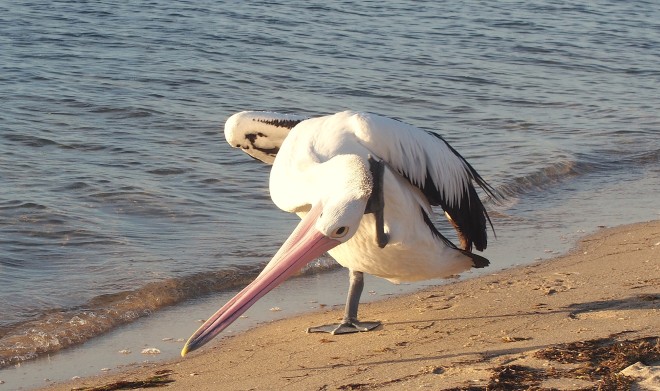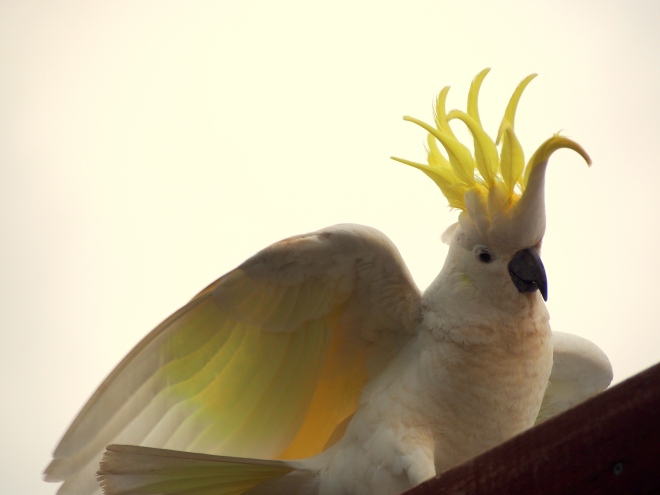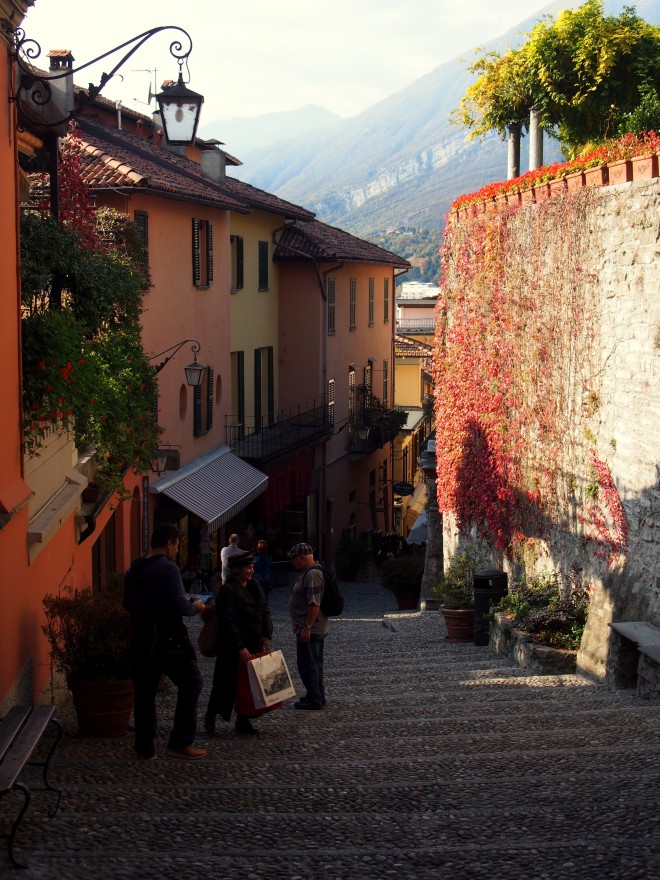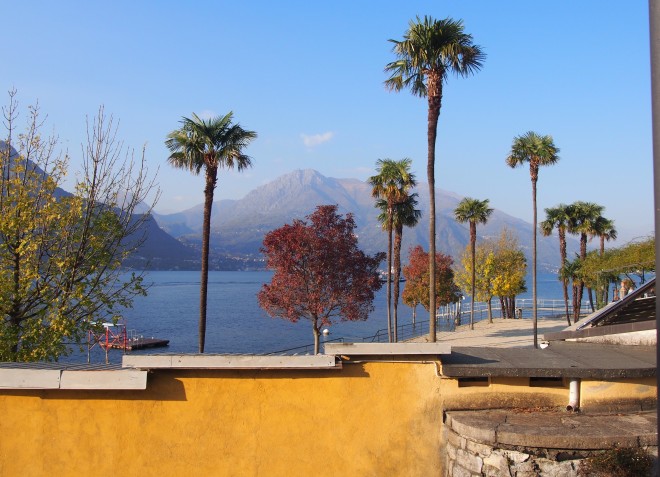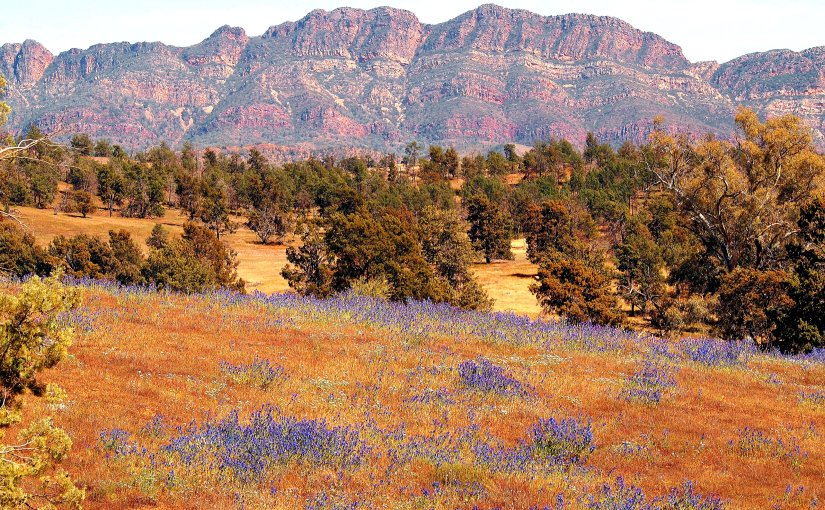Category: Uncategorized
Black Swan Event with Itchy Pelican
This fuzzy dawn photo was taken on the Mornington Peninsula, near Melbourne, and shows a black swan event that is not a rarity here, but an everyday occurrence. In the gloom, black swans evoke memories of those grainy pictures from Loch Ness.
Scratching an itch is more important than posing for a photo.
Bird Land
Sometimes I feel the soft wingtip of a King Parrot brush my shoulder as it flies by. At other times it’s a rush of air on the cheek as the bird announces its presence with a close fly by; an air kiss. It could happen when I’m in the garden or a paddock; an invitation to come back to the house. We whistle to each other at other times. In the morning, the King Parrots call to attract attention. If I don’t respond, the friendliest ones sit on the kitchen window ledges, staring inside in order to make eye contact, imploring attention. Is communicating with birds a sign of madness? If so, it’s been a long delusional spell for me, one that began in childhood when I called up grey thrushes in the bush. Slowly, they would come closer and closer, calling and responding, wondering why that alluring potential mate was not to be seen.
Here are photos of some regular garden visitors.

Cockatoos outlive humans. When tamed, they have great talking skills.




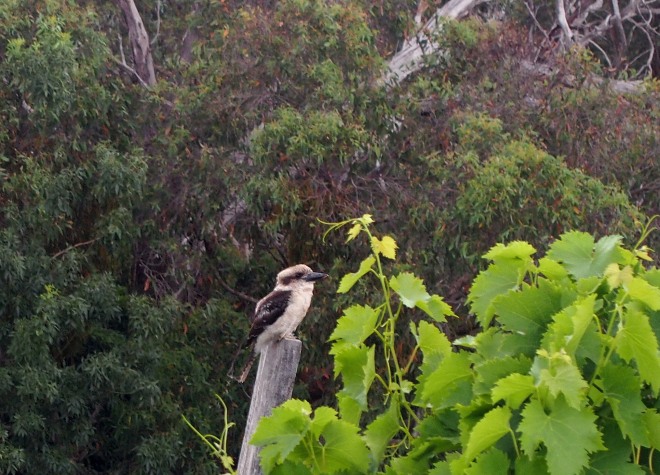
Smaller birds tend to be elusive.


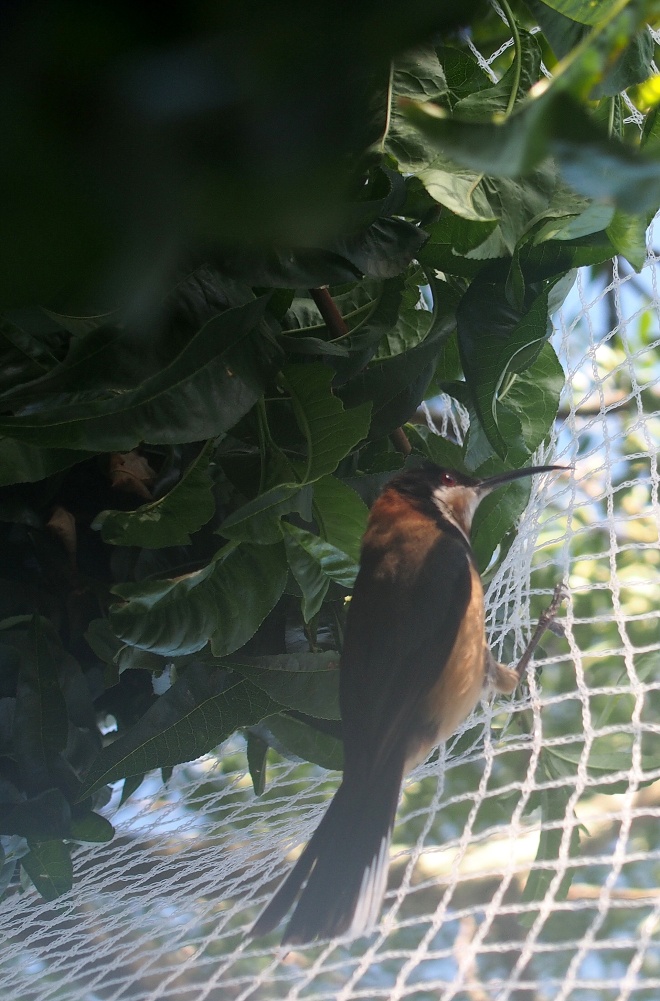
The gentle King Parrots are usually moved aside by other birds wanting to sample seeds. The lurid Rainbow Lorikeets make up for their smaller size with aggression; Sulphur Crested Cockatoos even more so, usually displacing all other birds with their swooping and threatening strutting. I was amazed to see this rare sight of a cockatoo sharing with a couple of King Parrots.

When returning from an overseas trip, the first morning back home is a delight of birdsong, a symphony of contrasting sounds from melodious to jarring. Fortunately most is the former. Recognising the different calls is one of the privileges of life in the bush.
The presence of birds mean that many fruit and vegetable crops must be protected. Fruit trees have to netted or else the fruit is devoured, an interesting contrast to Europe.

Galahs have a reputation for drunken and stupid behaviour, which has generated local Australian expressions such as, “You silly galah’, ‘he’s a galah’.

Another regular visitor, the wedge-tailed eagle is described here.
The quiet side of Lake Como
A late October wander around some of the quiet villages that hug the edges of Italy’s Lake Como provides a major contrast to the main tourist centres. As the air increasingly hints of winter, during weekdays it’s possible to walk for hours while rarely sighting another person. Local buses seem to travel at times unconnected with their published timetables, matching the random hours of restaurants and alimentari. More reliable ferries provide economical travel around the lake, offering the chance to hop off and explore.
Last year’s visit was enhanced by the generosity of friends who lent their village house for a relaxing week, complete with its expansive views of the lake and mountains. Most of the time a wildfire burned on high, causing a smoky haze. Locals attributed this rare fire event to the changing climate.


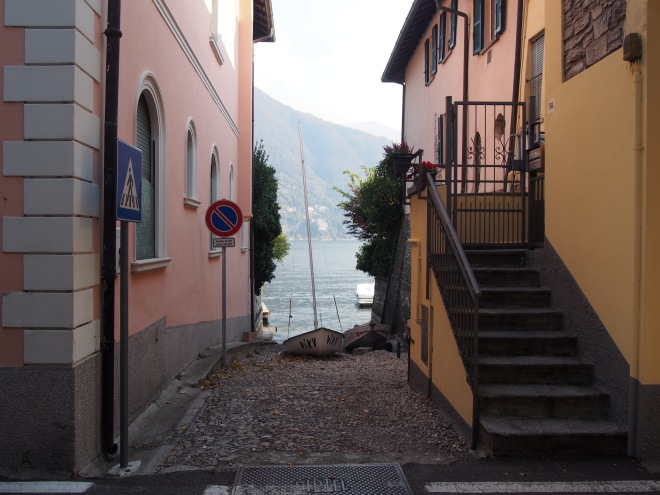

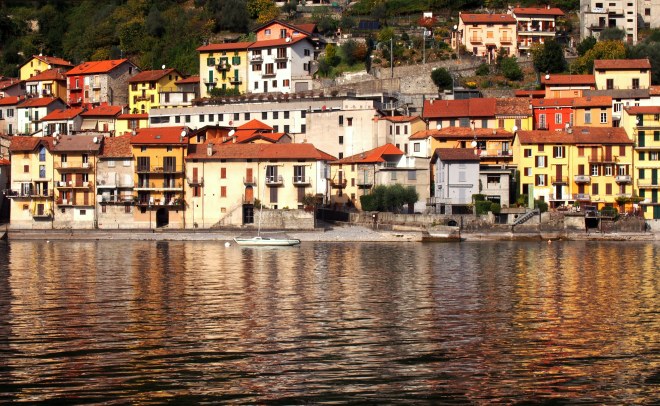
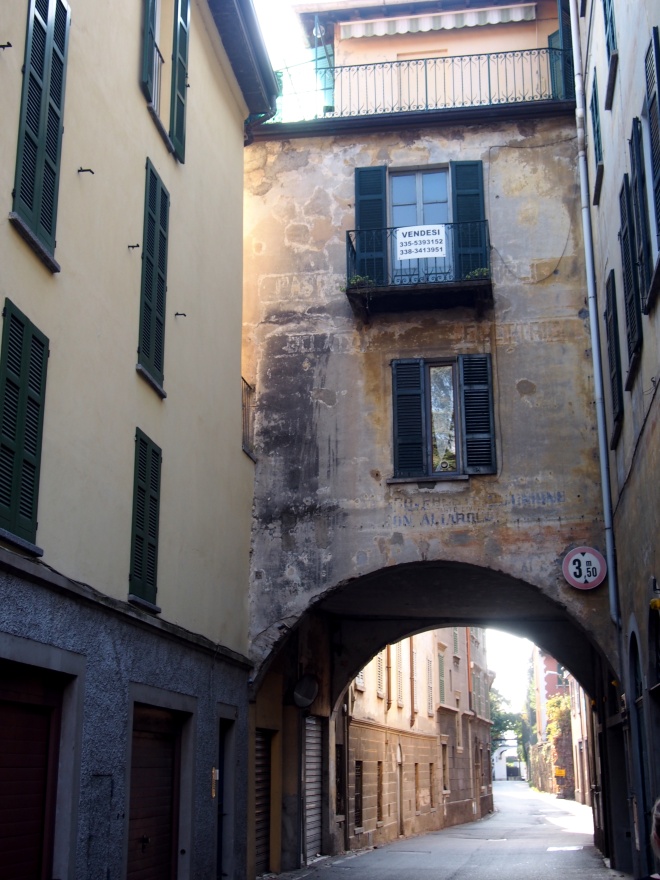



Postcard from Prague
In a city of splendid architecture, and a fascinating history and culture, it is no wonder that tourists provide an opportunity for musicians, artists, magicians, entertainers and tricksters.
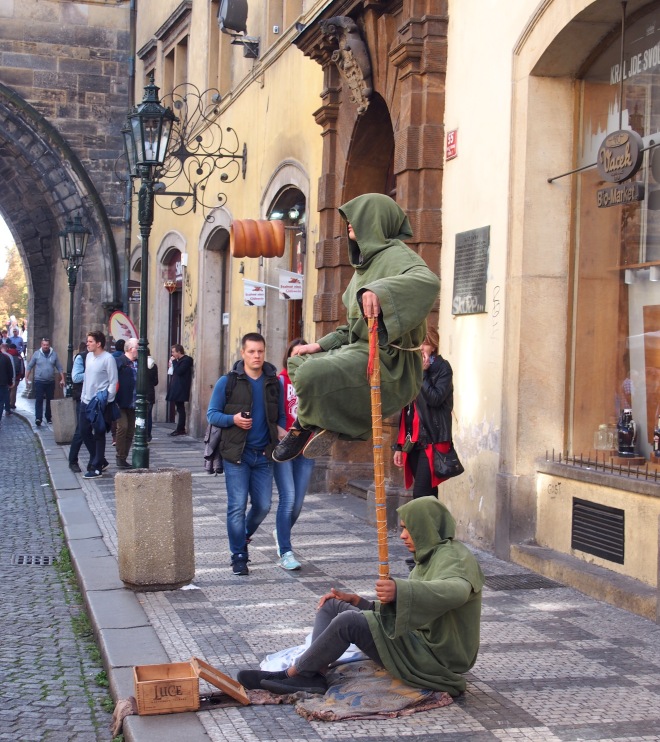
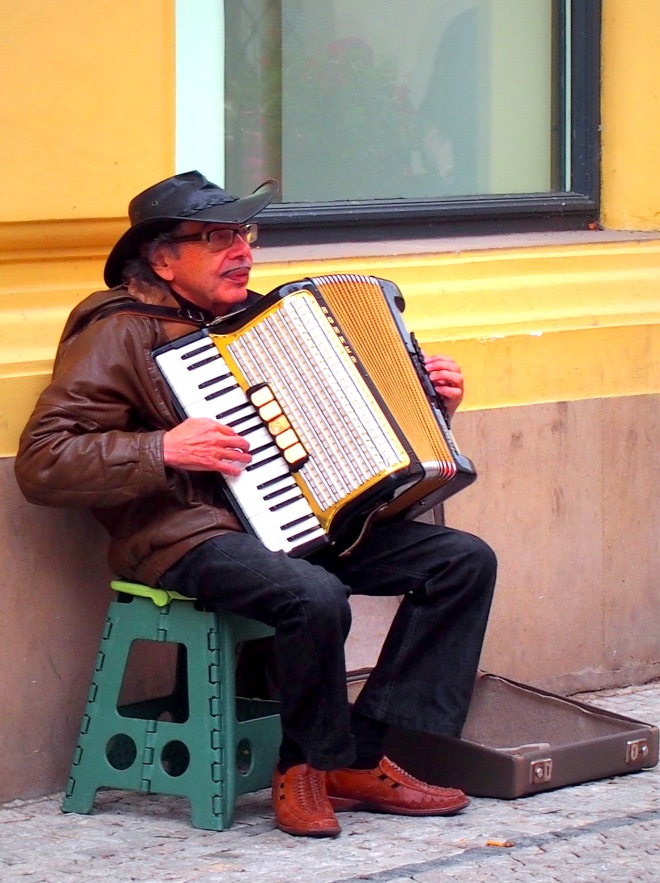
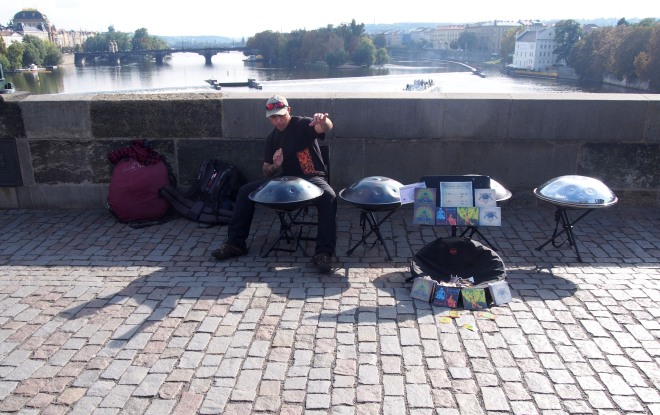
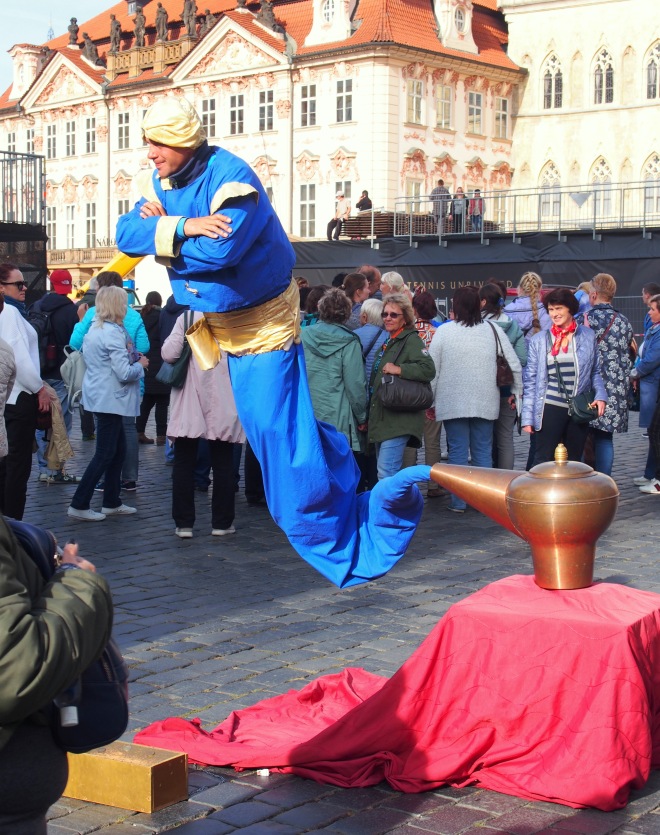


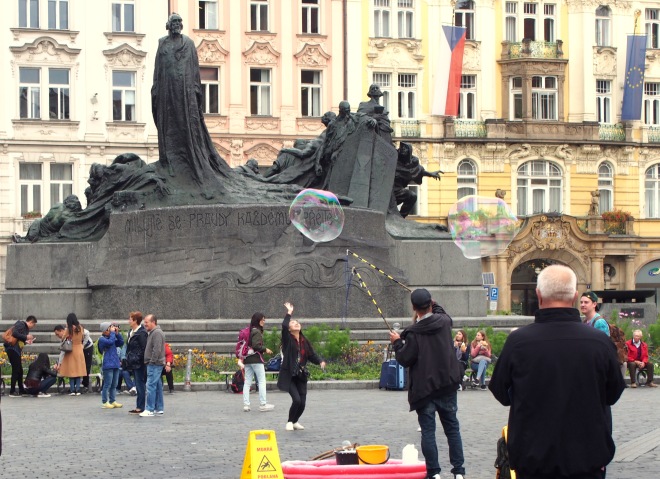
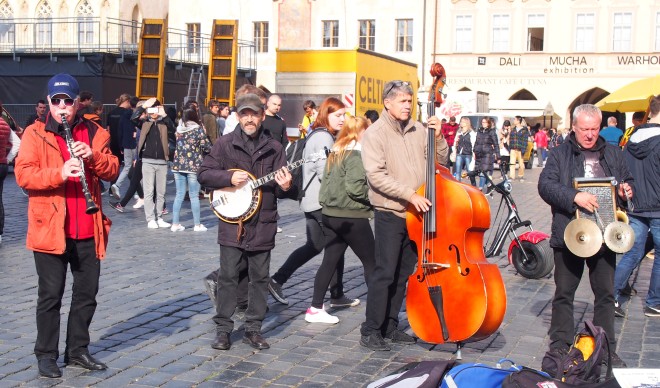

Empty churches are everywhere in Prague, as the country has the lowest religious adherence in Europe. The large Jewish population was almost totally murdered by the Nazis in World War Two. The city’s empty churches and synagogues are now important classsical music venues.

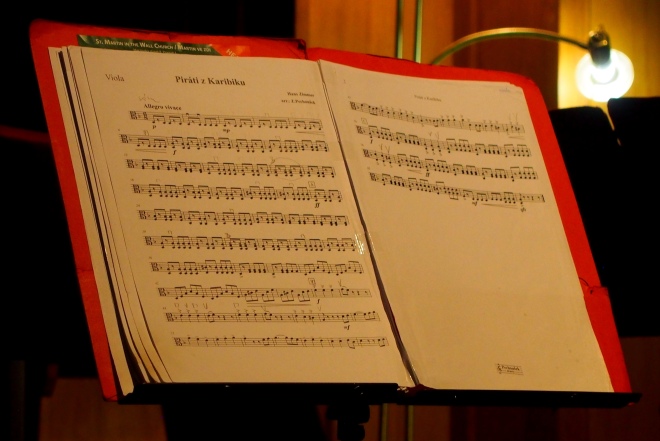
A week in Far North Queensland
A visit to Far North Queensland (FNQ) a couple of weeks ago reinforced the conclusion that a longer time is much better. With the world’s oldest rainforests and largest coral reef, as well as scenic country, wilderness, misty mountains, tropical agriculture, intriguing towns and a distinct culture, FNQ is substantially different to my home territory 3,000km to the south.
Friends Peter and Steve generously provided accommodation at their rainforest B&B, located about an hour and a half south of Cairns. This base offers exceptional relaxation in a very special environment; with the sounds of a rushing stream and rapids coupled with late Wet Season showers on a tin roof, the deep green of the rainforest, wild bird calls… as well as walks beside surrounding sugar cane and banana farms, and allowed easy day visits to:
- characterful Innisfail – featuring Art Deco architecture and quirky local culture, and access to the abundant harvest of its fishing fleet
- the Atherton Tablelands – gorges, waterfalls, more rainforest, atmospheric towns, lush farms of cattle, sugar cane and bananas
- the Mission Beach area where two world heritage areas meet (the Wet Tropics and the Barrier Reef).

Mission Beach looking out to the Coral Sea and Dunk Island, one of many islands close to this coast. You can walk 14 km along the beach for similar sublime views, then explore the rainforest as a contrast, hopefully to sight a Cassowary.
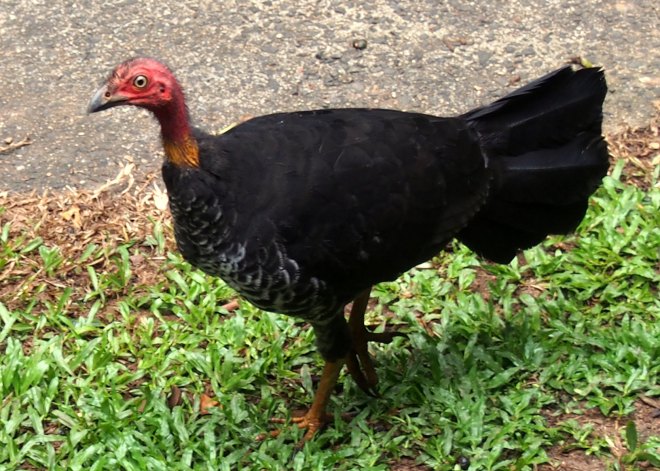
A wild Brush Turkey making eye contact at breakfast time.
Utchee Creek swimming hole at the rainforest B&B.

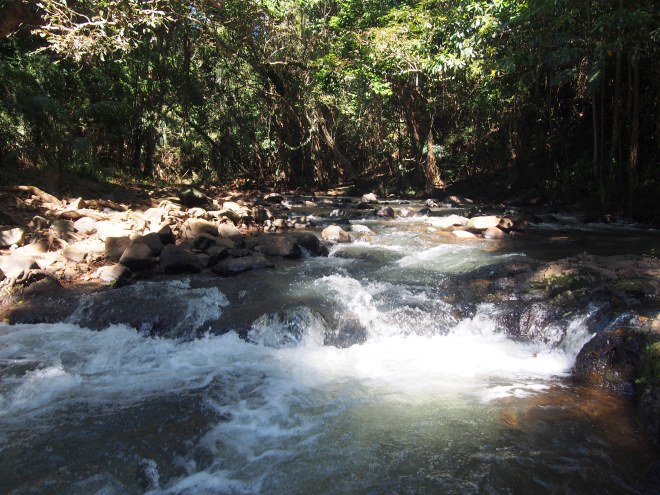

In Australian country towns, pubs usually represent the strongest architectural presence, occasionally challenged by churches. Pub patronage has generally been more enduring.

The Criterion Hotel in South Johnstone.
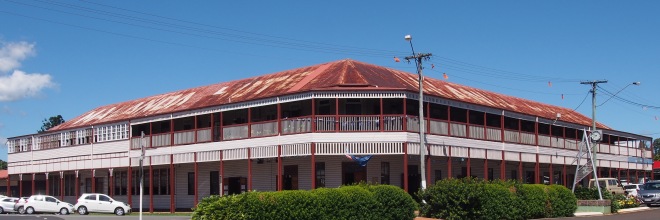
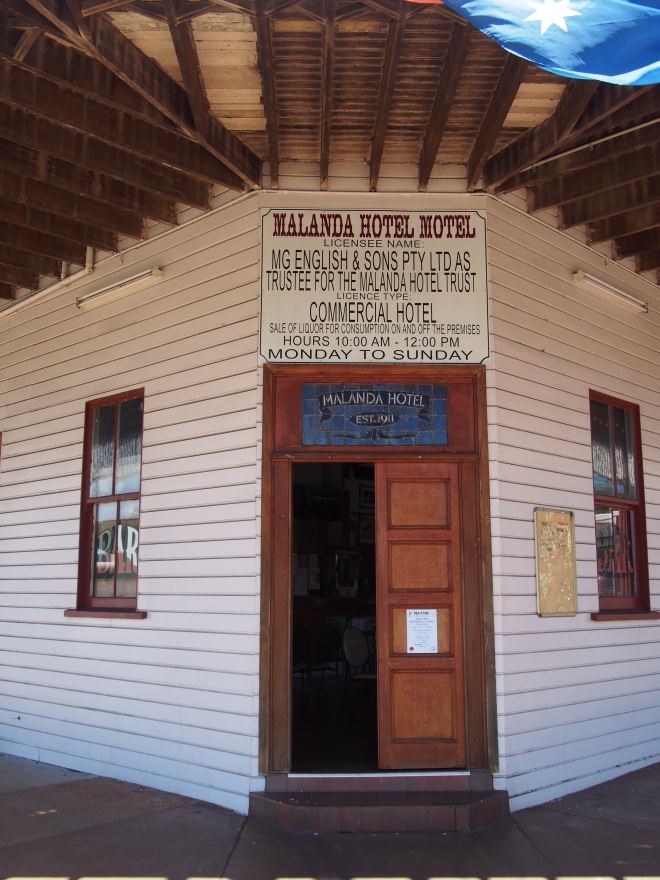
The Malanda Hotel at Malanda in the Atherton Tablelands – above. Below – the Grand Hotel in Atherton and the Royal Hotel at Herberton.
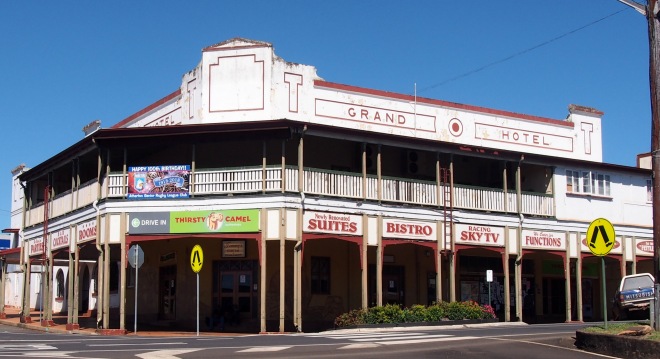

Innisfail was substantially destroyed by a cyclone in 1918. An Art Deco theme in the rebuild is a feature of the town, similar to the architecture of Napier in New Zealand, rebuilt after that town was destroyed by earthquake in 1931.


The sign for Ansett Airways – ‘Book Here’ – omits to mention that the airline became bankrupt in 2001, probably just another example of local humour.

While some towns in FNQ are flourishing, others like South Johnstone are in decline.
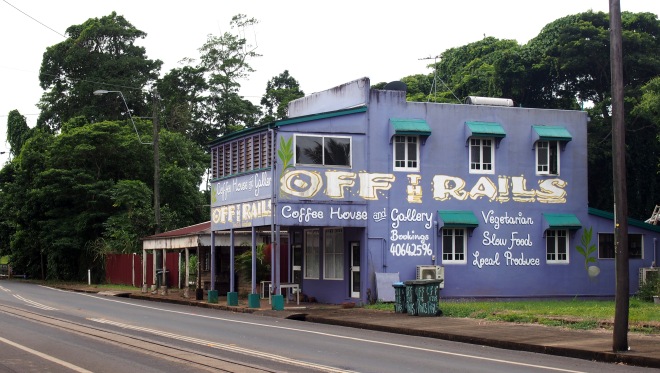

Sugar mills remain important.

South Johnstone; the cane train line to the sugar mill runs up the middle of the main street.

Tully’s sugar mill. Tully is the wettest (or second wettest) town in Australia averaging more than 4,000 millimetres (160 in) annually.
I’m heading north again very soon.
Bergerac Reflections
Bergerac was once important in the Dordogne River boat trade. Now, as a medium sized town of about 30,000 people in south west France, a day visit easily allows enjoying the market (Saturdays and Wednesdays), an exploration of the medieval centre and port, securing a table for lunch, and a walk along the river.

A bridge over the Dordogne River in Bergerac.
There are many lunch choices.

The market is a meeting place.
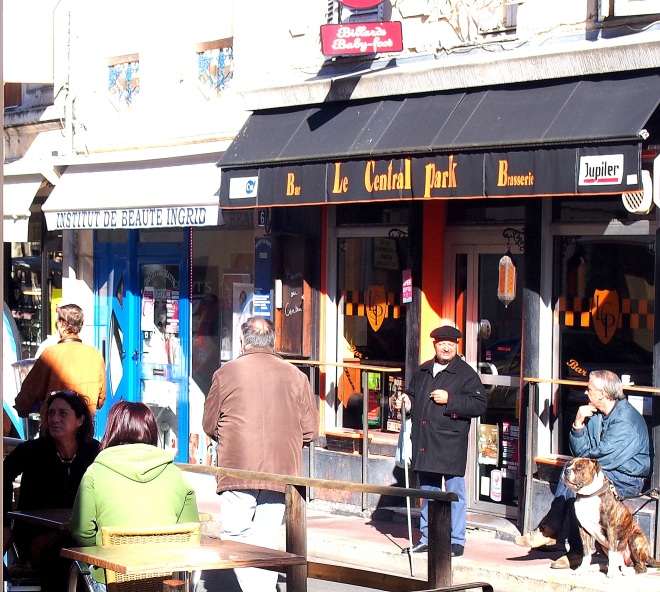


Do Madmen Rule?

Just off Victoria Street, Richmond, Australia.
Outback South Australia
A visit to the Flinders Ranges in outback South Australia is one of my favourite camping trips; an opportunity to enjoy the solitude of Australia’s haunting and ageless landscape, distinct flora and fauna, bushwalks, ancient rock art and more. One visit is not enough, as the Ranges cover a vast area, stretching over 400 kilometres.
On the way from home near Melbourne, I stay at campsites on the banks of the Murray River, at quaint and quiet country towns, or in some of South Australia’s prime wine regions like the Barossa Valley and Clare Valley. Tasting wines before camping in the desert has a certain piquancy.
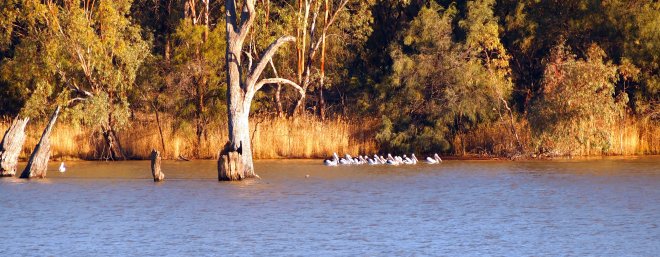
The tranquility of the Murray River is occasionally broken by a flotilla of pelicans gliding by the campsite, or a passing houseboat.
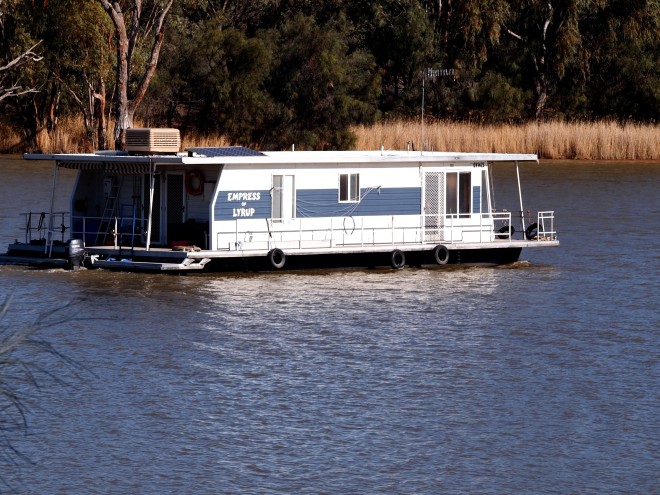
Burra is an appealing South Australian country town close to the Ranges. Typically, it has grand buildings, a characterful pub, and fine streetscapes, a testament to a more prosperous past; in its case, copper mining.


Another classic country pub at Peterborough.

Bush camping at Wilpena Pound in the Flinders Ranges. The billy is boiling on the open fire while the solar panel charges the battery to power the portable refrigerator and lights.

Emus wander through the camp, at home in an arid environment.


Red gums line the creek beds waiting for infrequent rains to flood the watercourse.

A walk or a drive provides these views.



Ruined stone houses are common around the Flinders Ranges. European settlers established farms in the nineteenth century and misunderstood the Outback climate, believing that a good season or two was typical. Ultimately, the usual drought-like weather conditions prevailed and within a generation, most small settlers were ruined. A tragedy for them, but worse for the Aboriginal people who were displaced by the settlers, after living in the area for tens of thousands of years.

A Walk on the Isle of Skye: Tragedy, Scenery, Legends, Sheep, and the Highland Clearances
I walked to Boreraig in late August 2017. Boreraig was a Highland crofting village until its inhabitants were forcibly evicted in 1854. The walk provides an opportunity to enjoy the Isle of Skye’s unique scenery, as well as to reflect on the Highland Clearances, and the continuing widespread involuntary displacement of people around the world.


The walk commences at the ruin of Cill Chriosd (Christ’s Church in Gaelic) once the main parish church on Skye. Here, the church ruins and graveyard at the left stand below Skye’s imposing Cuillan mountains, with the ruined wall of the Suardal marble cutting and polishing works in the foreground.
Next, it’s a lengthy and steady climb.



It’s a long way to fall from the crest of the hill before the descent into Boreraig.

Walking or mountain biking are the only options to reach Boreraig by land. I saw only one other couple on my walk. An old stone fence from the village can be seen beyond the cyclists.
About 120 people lived in Borereig’s 22 houses before their forced eviction. Once a beautiful setting for a village, now it’s sombre, eerie and forlorn.

Stone fences snaking into the distance, and piles of overgrown rocks where houses once stood, are a lonely reminder that a community once existed here.



The return walk offers more of Skye’s ever-changing light and views.


On the right above is Beinn na Caillich, one of the Red Cuillan. Local legend claims that the grave of a Norwegian princess from the Viking era is located on the summit where she was laid to rest so that she could forever face the land of her birth and feel its winds.
If you stay on Skye for a while, it’s easy to believe in legends.
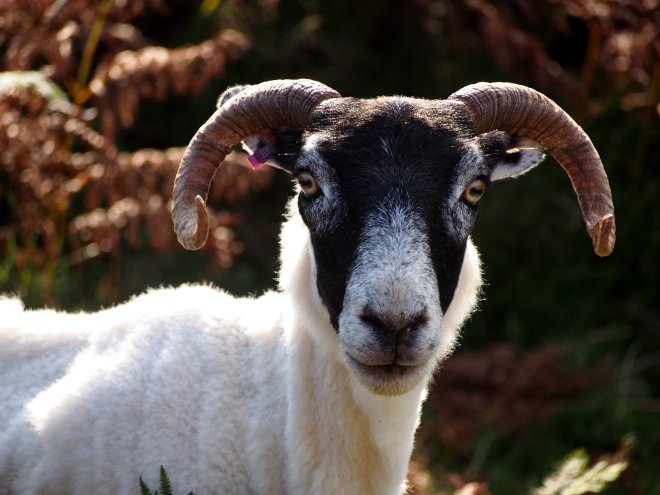
In many cases, sheep replaced people in the Highland Clearances as they offered more money to the landowners.
I’ve written more about Skye here:
https://wordpress.com/post/nomadicpaths.wordpress.com/5477
Walk details
- Distance: a return walk of 10.2 km from Cill Chriosd on the Broadford to Elgol road. A longer walk includes visiting another Clearance village – Suisinish.
- Terrain: a steady climb on well defined paths and tracks that are sometimes boggy, and often uneven, followed by a gentle descent into Boreraig. An early part of the walk follows the old ‘Marble Line’, the rail line that was used to move marble down to the Broadford jetty in the late 18th and early 19th centuries. The marble is claimed to be better than Italy’s famous marble from Carrara.
- Total Ascent: 353m (1158ft)
- Rating: Superb
http://www.go4awalk.com/walks/walk-search/walk.php?walk=h149
The Clearances
The Highland Clearances were a disaster for Scottish Gaelic culture. Like all major historical events, they are complex. The Laird of Boreraig, Lord McDonald of Skye, claimed that the crofters of Boreraig had to move “because they (the people) were too far from Church.” This was not the real reason for their eviction. Lord McDonald was close to bankruptcy at the time. In an attempt to reverse the debts, the administrators of the McDonald estate cleared Boreraig and other villages and replaced the people with sheep, because sheep provided bigger profits.
More reading
This site has a brief history of Skye:
http://www.scottishaccommodationindex.com/isleofskyepics.htm
http://www.electricscotland.com/history/clearances/29.htm
http://www.blaven.com/sevenmiles.aspx
http://www.scotsman.com/sport/boreraig-and-suisnish-1-1393025
https://en.wikipedia.org/wiki/Boreraig
https://canmore.org.uk/site/11562/skye-boreraig


